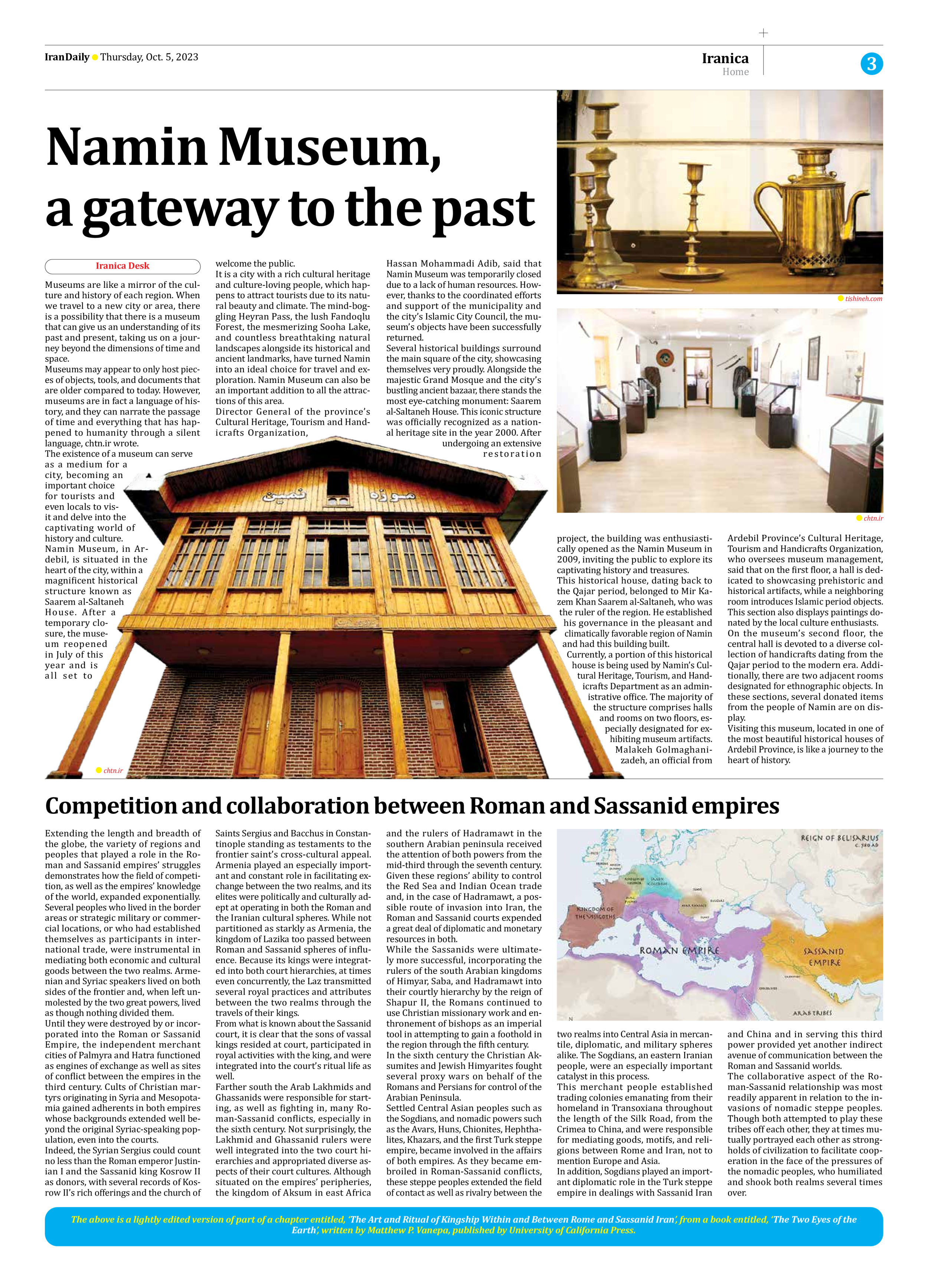
Competition and collaboration between Roman and Sassanid empires
Extending the length and breadth of the globe, the variety of regions and peoples that played a role in the Roman and Sassanid empires’ struggles demonstrates how the field of competition, as well as the empires’ knowledge of the world, expanded exponentially. Several peoples who lived in the border areas or strategic military or commercial locations, or who had established themselves as participants in international trade, were instrumental in mediating both economic and cultural goods between the two realms. Armenian and Syriac speakers lived on both sides of the frontier and, when left unmolested by the two great powers, lived as though nothing divided them.
Until they were destroyed by or incorporated into the Roman or Sassanid Empire, the independent merchant cities of Palmyra and Hatra functioned as engines of exchange as well as sites of conflict between the empires in the third century. Cults of Christian martyrs originating in Syria and Mesopotamia gained adherents in both empires whose backgrounds extended well beyond the original Syriac-speaking population, even into the courts.
Indeed, the Syrian Sergius could count no less than the Roman emperor Justinian I and the Sassanid king Kosrow II as donors, with several records of Kosrow II’s rich offerings and the church of Saints Sergius and Bacchus in Constantinople standing as testaments to the frontier saint’s cross-cultural appeal. Armenia played an especially important and constant role in facilitating exchange between the two realms, and its elites were politically and culturally adept at operating in both the Roman and the Iranian cultural spheres. While not partitioned as starkly as Armenia, the kingdom of Lazika too passed between Roman and Sassanid spheres of influence. Because its kings were integrated into both court hierarchies, at times even concurrently, the Laz transmitted several royal practices and attributes between the two realms through the travels of their kings.
From what is known about the Sassanid court, it is clear that the sons of vassal kings resided at court, participated in royal activities with the king, and were integrated into the court’s ritual life as well.
Farther south the Arab Lakhmids and Ghassanids were responsible for starting, as well as fighting in, many Roman-Sassanid conflicts, especially in the sixth century. Not surprisingly, the Lakhmid and Ghassanid rulers were well integrated into the two court hierarchies and appropriated diverse aspects of their court cultures. Although situated on the empires’ peripheries, the kingdom of Aksum in east Africa and the rulers of Hadramawt in the southern Arabian peninsula received the attention of both powers from the mid-third through the seventh century. Given these regions’ ability to control the Red Sea and Indian Ocean trade and, in the case of Hadramawt, a possible route of invasion into Iran, the Roman and Sassanid courts expended a great deal of diplomatic and monetary resources in both.
While the Sassanids were ultimately more successful, incorporating the rulers of the south Arabian kingdoms of Himyar, Saba, and Hadramawt into their courtly hierarchy by the reign of Shapur II, the Romans continued to use Christian missionary work and enthronement of bishops as an imperial tool in attempting to gain a foothold in the region through the fifth century.
In the sixth century the Christian Aksumites and Jewish Himyarites fought several proxy wars on behalf of the Romans and Persians for control of the Arabian Peninsula.
Settled Central Asian peoples such as the Sogdians, and nomadic powers such as the Avars, Huns, Chionites, Hephthalites, Khazars, and the first Turk steppe empire, became involved in the affairs of both empires. As they became embroiled in Roman-Sassanid conflicts, these steppe peoples extended the field of contact as well as rivalry between the two realms into Central Asia in mercantile, diplomatic, and military spheres alike. The Sogdians, an eastern Iranian people, were an especially important catalyst in this process.
This merchant people established trading colonies emanating from their homeland in Transoxiana throughout the length of the Silk Road, from the Crimea to China, and were responsible for mediating goods, motifs, and religions between Rome and Iran, not to mention Europe and Asia.
In addition, Sogdians played an important diplomatic role in the Turk steppe empire in dealings with Sassanid Iran and China and in serving this third power provided yet another indirect avenue of communication between the Roman and Sassanid worlds.
The collaborative aspect of the Roman-Sassanid relationship was most readily apparent in relation to the invasions of nomadic steppe peoples. Though both attempted to play these tribes off each other, they at times mutually portrayed each other as strongholds of civilization to facilitate cooperation in the face of the pressures of the nomadic peoples, who humiliated and shook both realms several times over.
The above is a lightly edited version of part of a chapter entitled, ‘The Art and Ritual of Kingship Within and Between Rome and Sassanid Iran’, from a book entitled, ‘The Two Eyes of the Earth’, written by Matthew P. Vanepa, published by University of California Press.







